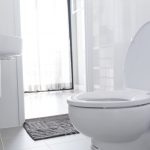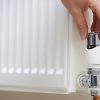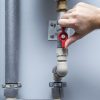Bleeding your radiators:
“How to bleed your radiators” is a common DIY heating question, we thought we would address this issue here in our latest blog post.
Requires:
Radiator Key/flat-blade screwdriver
Cloths
Towel/Bowl
All aspects of your heating system should be maintained, ensuring everything is working correctly, the bleeding of your radiators can often be a forgotten step.
Trapped air can prevent hot water from heating your radiators fully! Bleeding your radiators is a simple job and it can make a real difference to the energy-efficient of your heating.
Please follow these instructions with care. If you don’t feel confident about doing this yourself, give us a call on 01252 917 640 and we will book in a time to bleed them for you.
1: Turn your heating on until your radiators are hot
Turn on the heating so that all your radiators come on – turn up the temperature on your thermostat and individual radiator temperature controls to make sure they are all hot.
2: Find out which radiators to bleed
Once your radiators are all hot, go and check each one to check that all parts of the radiator have warming up.
You are looking for cool spots, usually towards the top of the radiator, if you find areas on the radiator that are cool this would suggest air is trapped and you will need to bleed that radiator.
3: Bleed the radiators
Turn off your central heating before you bleed any radiators, cooling them and reducing any potential soaking to your floor.
Bleeding radiators usually requires a radiator key or a flat-blade screwdriver. At the top of the radiator at one end there will be a valve, place a towel/bowl below this on the floor. Attach the radiator key to the square bit in the center or put the end of the screwdriver into the groove. If you can’t find this key, you should be able to buy a replacement at your local DIY shop.
Hold the key or screwdriver with a cloth, and have another cloth ready to catch any drips, then slowly turn the radiator key or screwdriver anti-clockwise – you should hear a hissing sound if air is being released.
Once there is no more air, water will come out and the valve will need to be closed quickly. Us the cloth to clean up any spills being careful as the water can be very hot.
4: Check the pressure
Check the pressure by having a look at the gauge on your boiler. If the pressure is too low, you’ll need to ‘top up’. You can do this using the lever or tap on your boiler, known as the filling loop.
Afterwards, you may want to run another ‘hot test’ to check that your efforts have been successful. Simply turn your heating on, wait for all the radiators to heat up and check for any cool spots.
FloRise try to make the advice on our website www.florise.uk as useful and reliable as possible. However the purpose of this advice is provided as useful tips only and should not be taken as professional advice and should not be relied upon as such.
If you are in any doubts as to following any advice we recommend you speak to a qualified FloRise plumber who will under take the work for you. You can contact us locally 01252 917 640 or contact us online for a FREE quote https://florise.uk/quick-quote/






